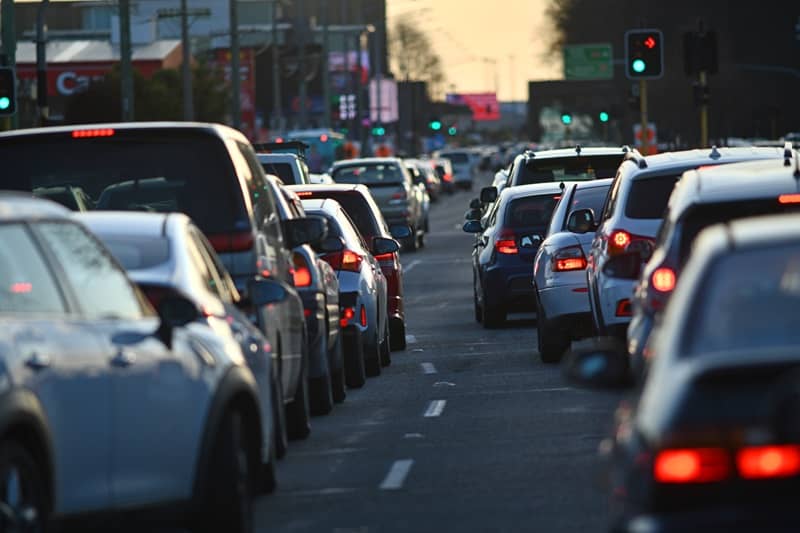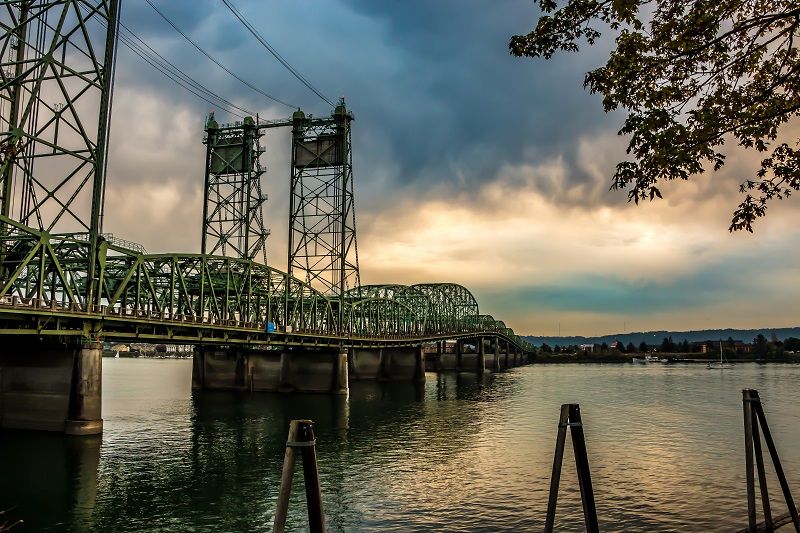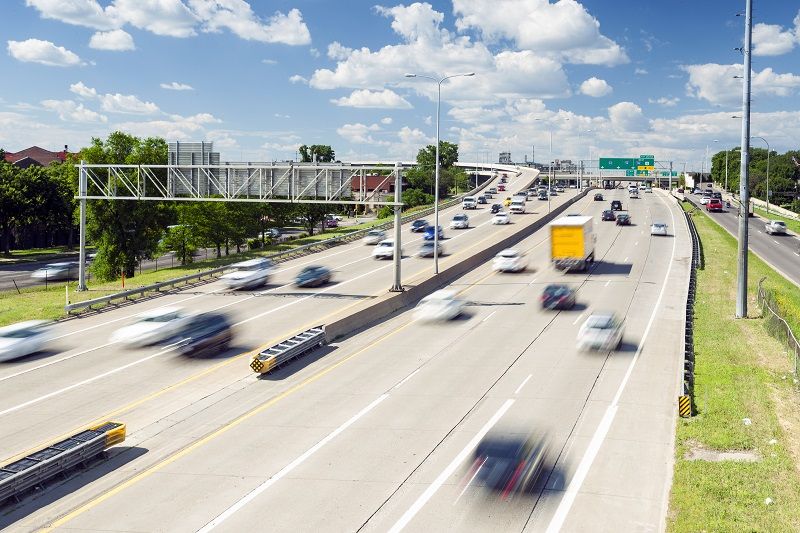November 29, 20323
Metro Council
600 NE Grand Avenue
Portland, OR 97232
Re: Adoption of RTP and HCT Plan
Dear Councilors:
I have previously commented on these documents to the Metro staff and to JPACT. At this juncture I will limit my suggestions to three issues: (1) tolling; (2) HCT; and (3) VMT reduction goals.
Tolling: I have long been a proponent of congestion pricing. More than 30 years ago I was on the Steering Committee for the drafting of Portland’s strategic plan, known as Portland Future Focus. A group of us were able to include a section endorsing the eventual implementation of congestion pricing on the entire regional network of limited access highways.
However, the vision of that document was not meant to be punitive. Congestion pricing, if implemented properly, simply converts the bartering of time lost in congestion to a cash exchange, resulting in free-flow traffic conditions – an obvious gain for motorists. It also increases the total hourly vehicle through-put of each lane from about 900 vehicles/hour in hyper congestion levels to 1,800 vehicle/hour in free-flow conditions – essentially adding virtual new lanes. With better driving conditions, air pollution per VMT drops, along with vehicle-hours of driving.
However, under proper road pricing, toll revenue should be recycled back into the highway system to further benefit motorists with improved maintenance and strategic expansions of the system to accommodate population growth. In a region like Portland, where there has been a de facto ban on new highways since 1982, we have a serious shortage of highway capacity. New lanes and entirely new highways and bridges are needed.
Moreover, as a political matter, we cannot price certain sections of the regional highway system and then divert the revenue to non-highway projects. Most voters, and the locally elected officials who represent them, will revolt against such punishment, as you have already seen.
National experts in road pricing long ago understood this, so they pioneered the concept of Express Toll Lanes (ETL) to show the public that new toll lanes could make drivers better off. SR 91 in California was the first application of this idea when it opened in 1995. Today there are more than 60 ETLs nationwide.
One of the newest opened in Virginia last August. Gov. Glenn Youngkin and other Virginia officials gathered on Interstate 95 in Stafford County for a ribbon-cutting ceremony to celebrate the opening of a 10-mile “FredEx” Express Lanes extension between Aquia Harbour and Fredericksburg. Transportation officials project that the new toll lanes will see a 66% increase in capacity during rush hour and save travelers as much as 35 minutes on a trip from Washington, D.C. to Fredericksburg.
High occupancy vehicles with three or more passengers, motorcyclists and commuter buses will be able to use the lanes without paying a toll. Tolls are priced in line with the existing Express Lanes and will adjust in real time as traffic patterns change.
Most of the public officials who spoke said the new lanes would provide them personal benefit as they travel across Northern Virginia and into D.C. One of them was Rep. Abagail Spanberger, a Democrat representing Virginia’s 7th Congressional District. At the opening ceremony she said:
We have a very simple rule in my life, in my family, in my office: If the Express Lanes are headed in the direction you want to go, always take them,” Spanberger said. “You will never regret it.
With the added lanes, the I-95 and I-395 Express Lanes are now the longest reversible road in the United States. The $670 million project was a public-private partnership between the Virginia Department and Australian road operator Transurban.
Closer to home, last week the newest ETL project opened in California, referred to as the I5/91 Express Lanes Connector. The project features a two-frame, 2,406-foot bridge that connects express lanes running from the eastbound 91 to the northbound 15 and the southbound 15 to the westbound 91. That means express-lane users won’t have to merge into general purpose lanes before hopping back on the express lanes.
At the opening day press conference, Riverside County Supervisor Karen Spiegel said:
“The 15/91 Express Lanes Connector was a vital missing piece of the 91 Express Lanes Project in Riverside County. With the opening of the connector, a regional link now exists so that our residents can have a reliable trip within and outside of our county.”
Project construction cost $270 million, funded by a combination of state dollars and toll revenue, and it began in April 2021.
We never have press conferences like this in the Portland region, because our transportation policies are designed to impose hardship. Instead of new Express Toll Lanes or a 3rd bridge over the Columbia River, we only get road diets, more light rail, streetcars, bike lanes, mandated density, parking restrictions and higher transportation taxes. None of this is working, and it won’t work in the next RTP.
Metro was originally conceived to be a visionary agency that would plan for the future by integrating transportation and land-use planning. But there is no vision here. As far as I can tell, there is no plan for ever building the next generation of great highways in the Portland region, no matter how much population or the economy grows. What’s the point of being a planning agency if you aren’t planning for growth?
Obviously this is a selective decision. Metro has no problem spending nearly a billion dollars on a regional Parks and Natural Area system that few people use, or can even find. The light rail and streetcar systems are always in a state of expansion, with plans ready to go as soon as the money is procured. Regional water providers don’t wait around for shortages; they actively plan for water purification, storage and distribution projects that are very expensive.
The ODOT-Metro-Portland-Multnomah County vision of tolling is so punitive that it will never be implemented. If you don’t have the courage to embrace Express Toll Lanes, you should simply delete all references to tolling from the RTP.
High Capacity Transit Plan:
The pandemic made it painfully clear that TriMet’s business model is hopelessly out of date. Trends that began decades ago—the dispersion of jobs and residences, telecommuting, and growing automobile ownership—were accelerated or at least continued by the pandemic. Yet TriMet, the Portland area’s largest transit agency, still operates a route structure that was designed for the early 1900s.
Prior to the pandemic, instead of updating TriMet’s business model, Metro and TriMet attempted to redevelop the Portland area to look more like it did in 1910, using the urban-growth boundary to increase overall population densities and transit-oriented developments to increase densities at the city center and along major transit corridors. Yet, they can’t reverse the trends that made TriMet’s route structure obsolete: the dispersion of jobs from downtown, near-universal automobile ownership, and the automobile’s huge advantages over traditional transit in terms of speed and access to the entire urban area.
Metro and TriMet’s biggest mistake was to rely on Big-Box Transit—transit vehicles with high capacities but whose route capacities are often low—that is expensive to build, inflexible in the face of rapidly changing transportation patterns, serves only a small portion of the urban area, and doesn’t really make sense in a region whose jobs are finely distributed across the landscape rather than concentrated in a single downtown.
While light rail has been particularly expensive, the Westside Express Service (WES) is almost a parody of this problem, costing $7.5 million a year to operate and never generating enough fares to cover much more than 8 percent of its operating costs.
Data showing transit’s share of commuting reveals how badly TriMet’s overall system was working before the pandemic. While TriMet carried 42 percent of downtown workers to and from their jobs in 2018, downtown held less than 10 percent of all jobs in the urban area. Outside of downtown, TriMet carried just 3.4 percent of workers to and from their jobs.
Though Portland has been celebrated as “the city that loves transit,” the reality is that TriMet provides terrible service to 90 percent of the region’s workers and job centers.
The pandemic drastically reduced downtown’s role as a job center, and it may never recover many of its former workers who are now productively employed at home. The high-income workers who once rode light rail are now working at home, while low-income workers who once took the bus have increased their automobile ownership and reduced their dependence on transit. Ridership may never recover, yet TriMet faces nearly $3 billion in debt plus pension and health care liabilities.
TriMet’s most important problem is its focus on downtown Portland. In 2021, Hillsboro had 83,000 jobs, far more than are currently found in downtown Portland. Beaverton had 64,000 and Gresham more than 37,000. If TriMet is to remain relevant in the future, it needs to redesign its system to serve these and other job centers as well as it served downtown.
Based on this reality, we recommend that:
1. TriMet and the region should immediately cease all planning for infrastructure-heavy transit projects, whether light rail, streetcar, or bus-rapid transit with dedicated bus lanes.
2. TriMet should immediately terminate the WES commuter-rail line, even if it means repaying a depreciated share of the federal government’s costs back to the feds, and plan to replace light-rail lines with buses when the rail lines are fully depreciated.
3. TriMet should change its current, downtown-centric bus system into a polycentric system with at least nine transit centers offering non-stop bus service to every other center and local bus routes radiating away from each center.
4. TriMet should test on-demand microtransit systems in parts of the region that currently have low transit usage (meaning high subsidies per rider) and also test a discount voucher program for low-income riders to determine if such vouchers would truly help low-income people as well as give TriMet better information about changing transportation patterns.
5. Metro, TriMet, Portland, and other cities in the region should stop subsidizing transit-oriented developments, which have done little to boost transit ridership and, due to their high construction costs, make little contribution to housing affordability.
VMT reductions
Metro’s first performance measure in the RTP seeks to reduce VMT/capita for both home-based and commute trips. This is a fatally flawed measure, and will never work.
First, Metro has no control over VMT. Driving decisions are made by individuals. Thus, Metro could spend its entire annual budget in pursuit of this goal and have no measurable results.
Second, measuring VMT/capita is virtually impossible. This is noted in one of the consultant memos (Wright and Rudzinski, footnote 15): “The Division 44 VMT reduction targets cannot currently be measured using Metro’s Regional Travel Demand Model.”
Third, VMT reduction policy has been in effect since LCDC adopted the Transportation Planning Rule (TPR) 1991, and has always failed. The original mandate was to reduce per capita VMT by 10% over 20 years, and 20% over 30 years. There is no evidence that this ever happened.
The first state-ordered TSPs were due by November 1993, but many jurisdictions could not meet the requirement. The deadline was then moved to May of 1996. This was followed by a formal evaluation of the program by consultants Parsons Brinckerhoff and ECONorthwest, in 1997. The consultants found that MPOs were not meeting the TPR requirement to reduce per capita VMT by 20% over 30 years, and did not anticipate that they could.
Metro planners predicted that the 2040 Growth Concept would only reduce per capita VMT by 5.2 percent compared to 1990 levels – but it would take 50 years to do so, not 30.
Fourth, VMT has little to do with congestion, which is the main problem that most people want solved. Congestion is specific to time of day, direction of travel, day of the weak, and location. VMT is not specific to any of those things.
Finally, VMT reductions are not even desirable in most cases. Every trip has a purpose, and that purpose has value to those making the trip. This was acknowledged years ago in one of the updates to the OTP.
According to ODOT, for every job created in Oregon, we can expect an additional 15,500 of annual VMT. For every increase in personal income of $1,000, we can expect to see an increase in VMT of 360 miles, on average.
If Metro Councilors are in favor of more job creation and higher wages – as most policy-makers are – then you should be in favor of increased levels of VMT.
There is also a growing body of literature showing that for transit-dependent, low-income workers and job seekers, improved access to car ownership will vastly increase employment opportunities and wage growth. We should be promoting automobile travel, not stifling it with more regulation.
Since LCDC adopted its Climate Friendly and Equitable Communities (CFEC) regulations last year, a new problem has emerged: the clear conflict between mandated VMT reductions and the housing production goals announced by Gov. Kotek on her first day in office. The Governor is seeking to raise the number of new housing units to 36,000/year for the next 10 years, which is an 80% increase over annual housing production during the last five years.
The Governor’s Housing Production Advisory Committee (HPAC) has been meeting regularly since April, and has analyzed the VMT-housing relationship. Local jurisdictions, including many from the Portland region, are adamant that the CFEC regulations are counter productive.
Some excerpts from testimony to the HPAC (as reported from the HPAC in a memo dated 9/22/23):
City of Wilsonville, Miranda Bateschell, Planning Director:
If the rules for the Transportation Modeling and Analysis are not changed (both the deadline and which land use decisions it applies to), and the State does not provide more guidance on an appropriate methodology for evaluating VMT, cities may be in a situation where housing developments ae slowed or halted.
City of Hillsboro, Andy Smith, Government Relations Manager:
The CFEC regulatory scheme is interconnected and making surgical fixes to rule provisions is likely ineffective. That is why the CFEC recommendation of “pause and align with OHNA implementation” is critical. The entire scheme needs to be reconciled.
Although Bend will not be subject to the RTP, the testimony to HPAC by Bend Mayor Melanie Kebler is instructive:
The City of Bend recently completed a VMT reduction analysis by DKS and Associates which concludes that although a 20% VMT reduction in Bend is theoretically possible, it would require the relocation and removal of thousands of existing housing units and jobs from both populated and entitled lands currently inside the City of Bend’s UGB to centrally-located Climate Friendly Areas (CFAs).
The purpose of this analysis was to evaluate whether a real-world scenario could succeed in achieving these standards. The answer is that it takes an absurd scenario to achieve the proposed standards.
VMT is not an appropriate metric for the RTP. It should be deleted.
Conclusion
If Councilors feel that the RTP must be adopted to meet various regulatory deadlines, fine. But you should do so with the acknowledgment that it is a computer-generated model of the world that is not relevant to most residents.
Instead of waiting another 3 years to begin the process all over again, you should immediately set up a work group of elected officials to brainstorm how the RTP can be made to serve the people, rather than the other way around.
Sincerely,
John A. Charles, Jr.
President and CEO












